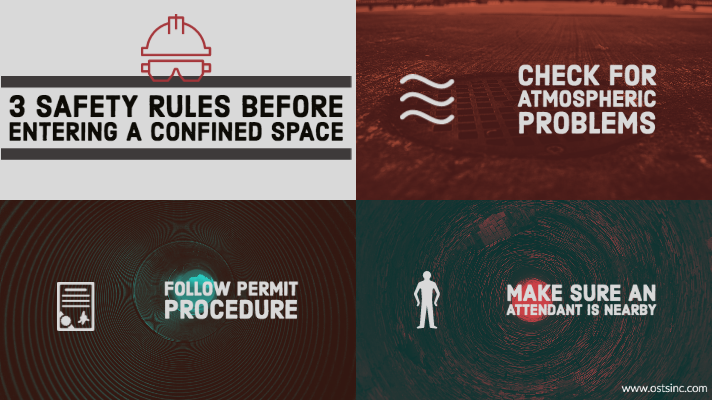To help protect yourself or employees from injury or death, it’s critical to know how to safely enter a confined space. In the United States there are about 92 confined space entry fatalities per year, according to a report from CDC.
In this blog post, we’ll explain what a confined space is, three simple safety rules to follow, and the importance of confined space entry training.
What is a Confined Space?
Entering any work space with restricted entry or exit, large enough that can be entered, and is not designed for continuous employee occupancy is considered a confined space. Spaces include:
- Manholes
- Boilers
- Ventilation and exhaust ducts
- Sewers
- Tunnels
- Pipelines
Why Are They Dangerous?
Working in an environment that is defined as a confined space, has the potential to put you in extreme danger if there is an emergency. Confined spaces can also limit your ability to breathe due to lack of oxygen from dust or another contaminant.
Three Rules To Safely Enter A Confined Space
Check for Atmospheric Problems – Your sight and smell may not always be able to detect a hazardous atmosphere. Using instrument monitoring will help detect atmospheric problems. Use these instruments for more accurate detection: electrochemical sensors and infrared sensors. Be sure to remove any found atmospheric hazards throughly.
Follow Your Permit Procedure – Permit-required confined spaces often have health or safety hazards. Occupational Safety and Health Administration (OSHA) requires workers to have a permit to enter these spaces.
Make Sure an Outside Attendant is Present –Before entering a confined space environment, be sure an outside attendant is present. If something doesn’t go right, he or she is there to call for assistance and make sure the problem does not become any worse.
Confined Space Entry Training
Due to extreme safety hazards, OSHA requires workers to have a permit when entering a limited-space environment. Occupational Safety Training Systems (OSTS) offers a unique confined space entry training program. OSTS addresses site-specific hazards in a manner to ensure applicability of information. Instructors not only cover the required elements, but use Tabletop and Practical exercises to further enhance the effectiveness of the class. Our confined space entry training program is also available via online training. Visit OSTS for more information on confined space entry training. Or call 909-468-3602 to find how OSTS can help you learn how to safely enter a confined space.
Confined Space Entry
Start Scheduling a Class Today








Thanks for the tip to follow the permit procedure. A ton of people assume that confined spaces are fine. But you need to follow the permit or you are going to mess up.
It’s great that you talked about confined spaces and how to identify one. Recently, one of my uncles said he’s interested in starting a construction project. My uncle wants to invest in real estate, and he mentioned he’s worried about construction safety, so I’ll be sure to share your tips with him! Thanks for the advice on how confined spaces are extremely dangerous and hard to work in!
I appreciate that you explained that following permit procedures would implement a safe production process. A couple of days ago, my brother mentioned he and his business associate were planning to undergo height safety training to be aware of restrictions and protocols for the safety of their production. He asked if I had ideas on the best licensing solution for effective planning. I’m grateful for this valuable knowledge article for the best experience. I’ll tell him they can consult trusted working safely at heights training as they can provide answers for their work training inquiries.
Great tips! The importance of safety cannot be overstated when entering confined spaces. Proper precautions can be ensured with these valuable insights. Thanks for sharing!